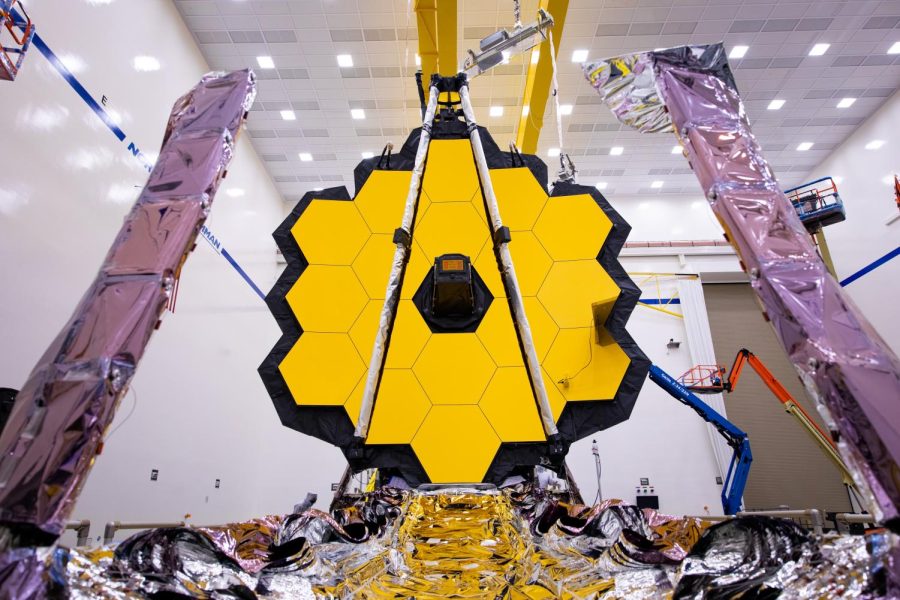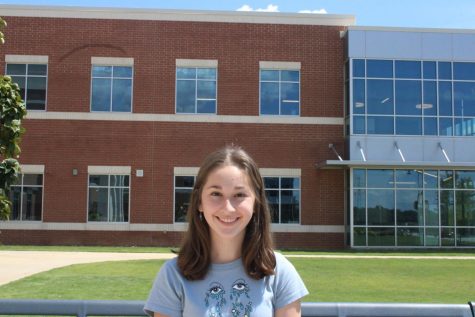Blast Off!
The James Webb Space Telescope launched after 25 years of development
James Webb Space Telescope fully built in December 2021.
February 2, 2022
In the past two decades, space exploration and research have gone above and beyond what scientists originally thought would be achievable, and the James Space Webb Telescope is no exception.
After more than twenty years of development, the $10-billion spacecraft lifted off on Dec. 25, 2021, to explore the cosmos and the universe’s earliest milestones. The James Webb Space Telescope was named after a former NASA administrator who oversaw the formative years of the Apollo Program and was largely responsible for Apollo’s approach, program and success.
Julia Graham (11) attributes her interest in space to her realization of how vast the unknown is and appreciates how it changes her perspective on life.
“I think it is incredible that the James Webb Telescope will be able to capture pictures of the very first stars in the universe,” Graham said. “The pictures and resources gathered could help scientists find other habitable planets which could lead to future space exploration outside of our solar system.”
However, this launch and development was not without its hardships. Engineers faced challenges, mistakes and cost overruns that added another level of risk for astronomers and space agency administrators. As the telescope continues to meet its tricky tasks safely, scientists on Earth prepare to study the telescope’s findings for the next decades to come.
Jevian Toban (9) has come to appreciate the scientists and researchers that study space after watching documentaries.
“I think the James Webb Telescope has opened many opportunities for the exploration of space,” Toban said.
According to a New York Times article, around 2 p.m. on Jan. 25, 2022, engineers were relieved to confirm the telescope had successfully reached its final destination, which is a small pocket of stability where the gravitational forces of the sun and Earth commingle. From this outpost the telescope will be dragged around the sun alongside Earth for years to see further into the past while also conserving as much fuel as possible to maintain its position.
Often compared to the Hubble Space Telescope, the James Webb Telescope is more than seven times more sensitive and nearly three times the size of the almost 32-year-old spacecraft. The James Webb Telescope is also designed to see further into the past and study the first stars and galaxies. Some of these ancient galaxies that will be studied are over thirteen billion years old, and only one hundred million years away from the big bang, when the universe was created which has never been done before.
Autumn Johnson (11) loves researching the stars and planets and the history behind them.
“The James Webb Space Telescope will let us know a lot more information about the stars and hopefully answer some long awaited questions. Have they always looked the same, have they always been there in the same place? We can see more vivid answers to how the universe itself was created,” Johnson said.





